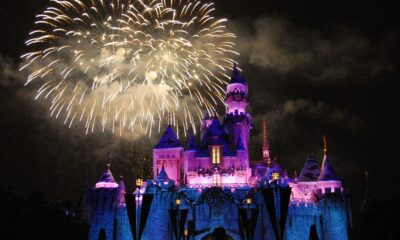MARKETING
Aggregation is key to the new Martech Map
Back in 2015, there was a lot of talk about the “Frankenstack” — the “infamous” Frankenstack, as Scott Brinker called it. This was the martech stack constructed from multiple point solutions, stitched together in-house, with unreliable connections, overlapping components and different ways with data. The Frankenstack was, in theory, customizable and agile — and widely considered more affordable than one of the premium marketing clouds.
Back in the old days. These were, relatively speaking, the early days of marketing technology. Oracle, after all, launched its integrated marketing cloud in 2014, becoming overnight one of the biggest players in the space alongside Adobe, Salesforce and — it really seems like another era — IBM and Hewlett Packard. Investing in one of these suites was an option for the enterprise.
There were two potential downsides. First, the threat of lock-in; if you invested in Adobe then you were likely stuck with the tools Adobe and its partners made available. The other downside, ironically, is that these premium suites sometimes looked like Frankenstacks close up, built as they largely were from acquisitions that then needed to be stitched together.
Integration was the challenge. Everyone was talking about integration — and of course we still are. Whether a brand was working with a stack of point solutions, integrated in-house, or a comprehensive marketing suite that was itself trying to integrate its various components, making solutions talk to each other and play well together wasn’t easy.
It was in 2018 that Adobe, Microsoft and SAP launched an Open Data Initiative, aimed at making it easier to move data between the platforms. Not much has been heard about the initiative since 2019. What has changed, however, is the ease with which data can move between platforms and partner apps.
The age of aggregation. As Brinker and Frans Riemersma shrewdly observe in their new “State of Martech 2022” report, aggregation is now a good way to think about the structure of martech stacks. They define aggregation as “(m)aking a large set of things easier to consume or access through a single source.”
For a real-life example, look no further than HubSpot, where Brinker is VP of platform ecosystem. Breaking down that title, HubSpot is in this case the platform. The ecosystem is the very large number of partner apps (now over 500) available in the HubSpot App Marketplace (Salesforce’s AppExchange runs to thousands of apps, and indeed there are many apps natively built on the Salesforce platform).
Get the daily newsletter digital marketers rely on.
Painless integration. This doesn’t mean that integration is no longer important. What it does mean is that marketers can choose from a wide arrange of point solutions they can reasonably expect to plug and play with their main platform (or platforms) with minimum fuss. Specialist apps can be deployed without needing to be individually stitched to other existing solutions (the Frankenstack), while there’s less pressure on the main platforms to grow by acquiring solutions and owning the problems that come with them (acquisitions do still take place, of course).
Read next: How app marketplaces are putting marketers in the driver’s seat
Why we care. It’s intriguing, in the week the first MarTech Landscape in two years was published, to pause and take a look back over the road traveled. It’s poignant to remember the late CEO of Oracle, Mark Hurd, taking the stage at an Oracle marketing conference to predict that in a few years’ time only one or maybe two of the big marketing suites would be left standing.
Those of us watching the space did our best to predict what would win out, the composed stack of best-of-breed solutions or the one-stop shopping promised by the big beasts of the martech jungle. In fact, things turned out differently and in some ways more interestingly, as the more dominant platforms became more open and the number and range of apps ready-integrated with them has grown. It’s growing still and it’s the fuel that’s driving martech’s famously long tail of solutions, making it all but certain that by next year the Landscape will be aka the Martech 10,000.




















You must be logged in to post a comment Login